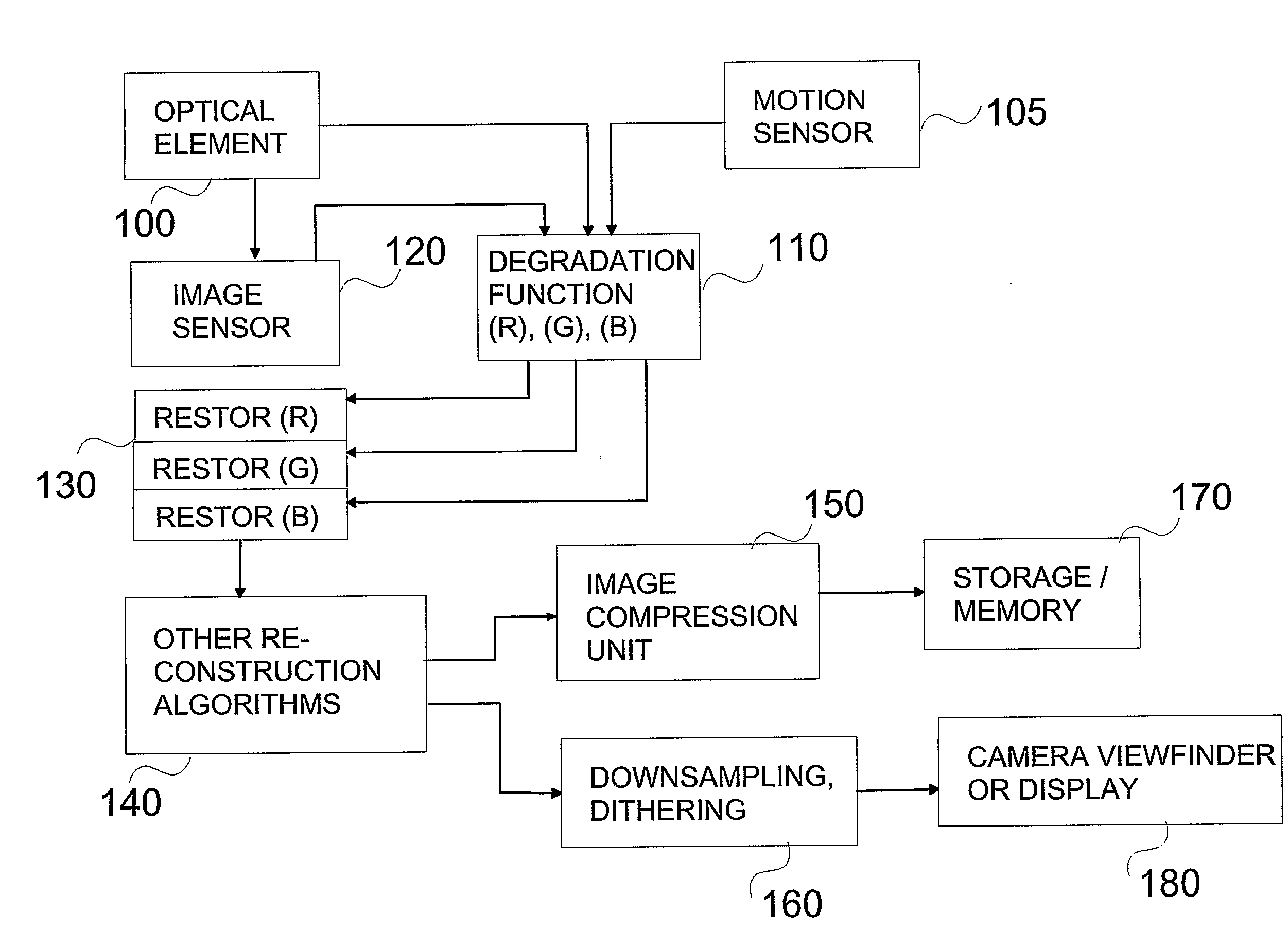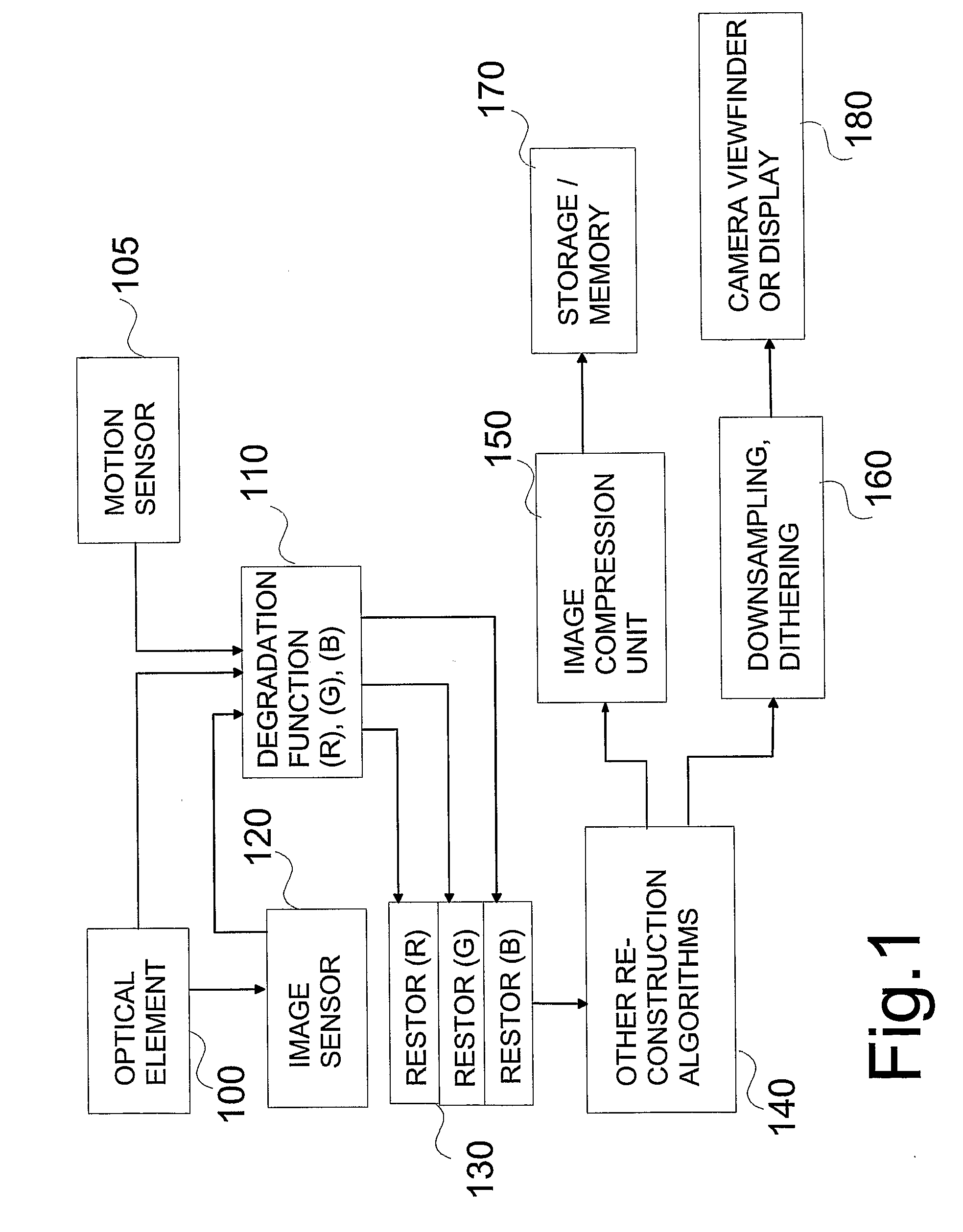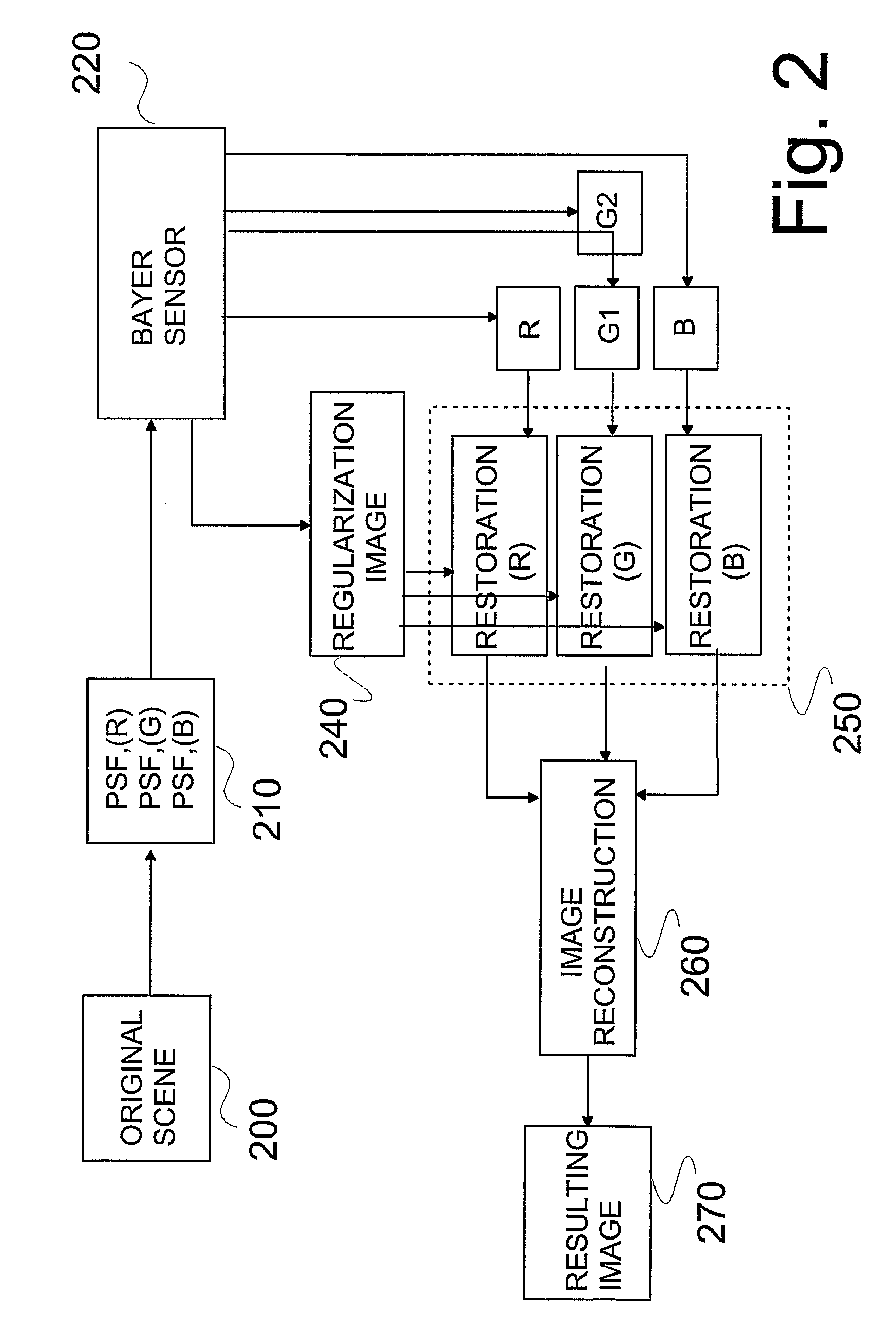Restoration of Color Components in an Image Model
a color component and image model technology, applied in the field of image processing, can solve the problems of motion blurring of the picture, blurring or degradation of the image, and high noise levels, and achieve the effects of improving the fidelity of the linear image formation model, reducing non-linearities, and increasing resolution and contras
- Summary
- Abstract
- Description
- Claims
- Application Information
AI Technical Summary
Benefits of technology
Problems solved by technology
Method used
Image
Examples
Embodiment Construction
[0033]This invention relates to a method for improving image quality of a digital image captured with an imaging module comprising at least imaging optics and an image sensor, where the image is formed through the imaging optics, the image consisting of at least one colour component. In the method, the degradation information of each colour component of the image is found and is used for improving image quality. The degradation information of each colour component is specified by a point-spread function. Each colour component is restored by said degradation function. The image can be unprocessed image data. The invention also relates to several alternatives for implementing the restoration, and for controlling and regularizing the inverse process.
[0034]The description of the restoration of images according to the invention can be targeted to three main points, wherein at first the blur degradation function is determined, e.g. by measuring a point-spread function (PSF) for at least o...
PUM
 Login to View More
Login to View More Abstract
Description
Claims
Application Information
 Login to View More
Login to View More - R&D
- Intellectual Property
- Life Sciences
- Materials
- Tech Scout
- Unparalleled Data Quality
- Higher Quality Content
- 60% Fewer Hallucinations
Browse by: Latest US Patents, China's latest patents, Technical Efficacy Thesaurus, Application Domain, Technology Topic, Popular Technical Reports.
© 2025 PatSnap. All rights reserved.Legal|Privacy policy|Modern Slavery Act Transparency Statement|Sitemap|About US| Contact US: help@patsnap.com



